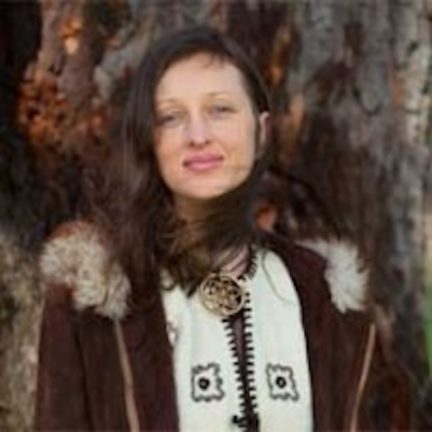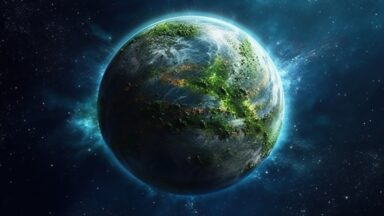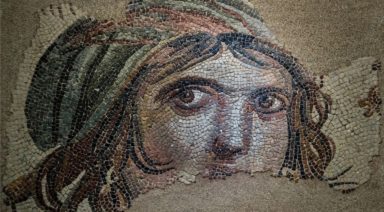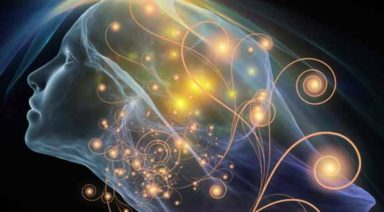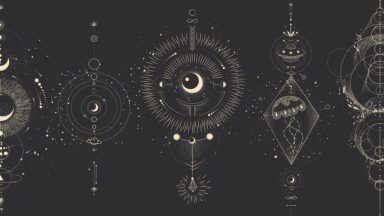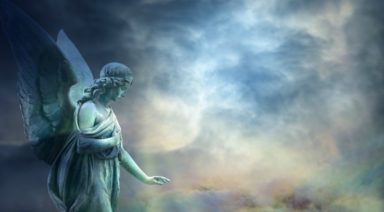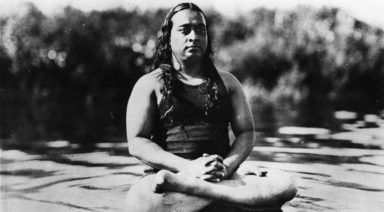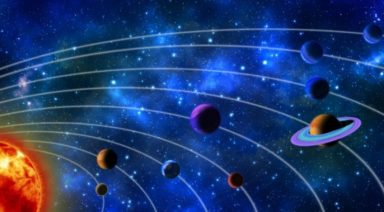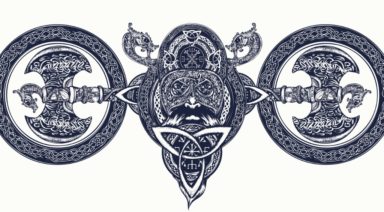Connecting with Our Personal Mother Goddess
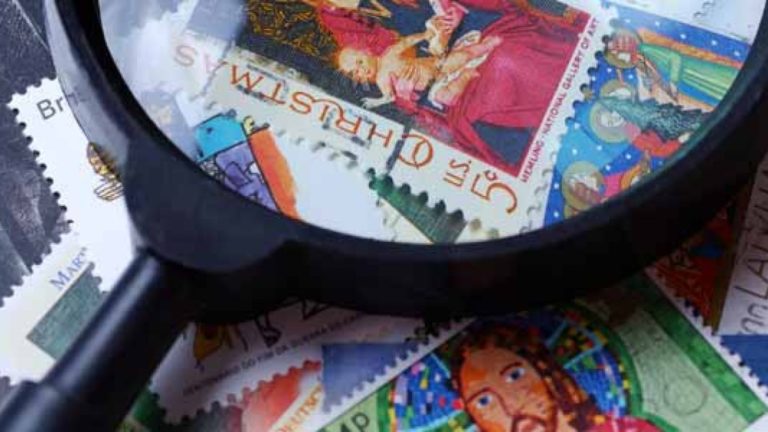
Ancient texts say that each of us not only has a physical mother, but our own spiritual mother, too. She has been described by Jesus, his disciples, the spiritual community of the Essenes Jesus was said to have spent time with, and in numerous ancient sources including those of the Mayans, ancient Egyptians, Hindus, and Taoists of China; and has been symbolized as countless goddesses such as Durga, Mary, Gaia, Isis, Athena, Coatlicue, Senge Dongma, Inanna, and as Yin energy — all of which encoded a knowledge of the feminine aspect of the universe and of our own consciousness.
References to the spiritual mother suppressed
Unfortunately, many spiritual teachings of the past were given in societies that were male dominated, and those given by Jesus for example, were edited and suppressed by the Church in formation, which removed all references to the feminine creative force, including from the Trinity (which I’ve written about here).
Many of these texts were not included as part of the Bible and are virtually unknown, whilst some like Pistis Sophia and the Essene Gospel of Peace, have only recently resurfaced after being lost to the world for over a thousand years.
Your Mother is in you, and you in her. She bore you she gives you life. It was she who gave to you your body, and to her shall you one day give it back again. Happy are you when you come to know her and her kingdom; if you receive your Mother’s angels and if you do her laws.
~ Jesus in The Essene Gospel of Peace, translated by Edmond Bordeaux Szekely
Their absence drastically affected the knowledge of the spiritual mother in the western world, which instead had been kept alive for thousands of years in the East.
The mother and father of creation
The Chinese, Egyptians, Mayans, Hindus, pagans of old Europe, and even early Christians, wrote creation stories in which a great spiritual Father and Mother came together in unison to give birth to a divine child and the entirety of creation.
Many ancient peoples recognized that nature imbues the principles of creation, and that just as every animal in nature has a mother, the whole of creation does, too.
It was this understanding that formed the basis of the trinity of Father, Mother, and Son, found in sacred teachings throughout the world, which served as symbols of the greater spiritual intelligence that gave rise to and sustains creation.
A universe of polarity
The creation of the universe out of a dual masculine and feminine energy can also be found in science, as the manifest universe arose from the interaction of protons and electrons, which are the positive and negatively charged particles that make up every atom.
In ancient China, this duality, expressed as positive and negative energy, was called yang and yin.
The Tao gives birth to One. One gives birth to yin and yang. Yin and yang give birth to all things.
~ Lao-Tzu in the Hua Hu Ching, translated by Brian Walker
We are the universe in microcosm
This same process of creation, in which the poles of masculine and feminine energy unite, is also key to understanding ourselves, as we are the universe in microcosm.
Let us make mankind in our image, in our likeness…So God created mankind in his own image, in the image of God he created them; male and female he created them.
~ Genesis 1:26-27, the Bible
Today, the field of cosmometry is now uncovering some of the properties of creation that many ancient peoples used to understand the nature of reality. Cosmometry describes our universe as being fractal and holographic — fractal in that the same fundamental pattern appears at all scales, and holographic in that wholeness is found everywhere and in everything, essentially describing the same maxims of wisdom “As above, so below,” and “As within, so without.”
The mother and father of consciousness
In keeping with the fractal and holographic nature of reality, creation arising from polarity applies not only to the creation of the universe, and to all natural life, but also to the origins of consciousness. Our body came from our physical mother and father — and in spiritual texts, our consciousness came from higher parts of our being known as our spiritual mother and father.
Within the great cosmic process, the two ch’I — Ch’ien the father and K’un the mother — blend harmoniously and give birth to all creation. Therefore, it is said that in all creation only man is also thus. Man possesses a prenatal and postnatal nature. The prenatal is the spiritual father and divine mother; the postnatal is the mundane father and mundane mother.
~ The True Transmission of the Golden Elixir, translated by Douglas Wile
The role of the spiritual mother
Throughout the ancient world, the spiritual mother was described as having similar attributes — most importantly as the destroyer of ego, darkness, and illusion. In India she is symbolized as the Hindu goddess Durga where she appears as warrior that rescues us from sin, and is described as follows:
[The goddess Durga is] always decked in celestial garlands and attired in celestial robes…who is armed with scimitar and shield, and always rescues the worshiper sunk in sin, like a cow in the mire, who in the hours of distress calls upon that eternal giver of blessings for relieving him of their burdens.
~ The Mahabharata, translated by Kisari Mohan Ganguli
The Chinese described feminine energy as capable of infinite transformation — a process we see continuously at work in nature. Ultimately transformation has its root in the mysterious properties of electrons, electricity, and fire, which in higher dimensions have spiritually transformative properties.
Connecting with our spiritual mother
Like the ancients, we can connect with our spiritual mother — understanding once more the role of the transformative power of feminine energy both within the universe and within us. Next time we feel anger, fear, depression, or ego of any kind, like Arjuna did at the advice of Krishna in the Hindu epic the Mahabharata, we can call on our spiritual mother, and in that way allow her to fulfill her role in liberating our consciousness from all illusion and suffering.
What Does Gaia Mean?

Although the name Gaia has various meanings and interpretations, it is most commonly associated with the Greek goddess who personified Earth in its primordial form. Quite simply, the definition of Gaia is life. She is all, the very personification of the earth. She is the mother goddess, inhabiting the planet, and offering life and nourishment to all her children. In ancient civilizations, she was revered as the mother, nurturer, and giver of life. She goes by many names, including Gaea, Ge, Mother Earth, Terra Mater to the Romans, Magna Mater, and more recently, Mother Nature. Each of these names is a testament to her enduring presence as the life-giver, the ultimate nurturer, and the architect of existence.
Gaia, often pronounced “GUY-uh,” holds the essence of existence within its syllables. This name, steeped in the rich tapestry of ancient Greek mythology, serves as a bridge to the Earth itself, embodying the very spirit of the planet. The etymology of Gaia, or Γαῖα in the original Greek, translates to ‘earth’ or ‘land,’ a fitting homage to her role as the primal Earth Mother. The term has since transcended its mythological roots, evolving into a symbol for the interconnectedness of all life on Earth, particularly within environmental and ecological contexts.
As we delve into the myriad ways she manifests across cultures and epochs, we embark on a journey to deepen our connection with the world around us, exploring the profound legacy of Gaia’s nurturing embrace.
Gaia: The Goddess of Ancient Greek Mythology
Within the pantheon of ancient deities, Gaia’s presence was unparalleled, embodying the very essence of primordial creation and maternal might. Her name, evoking the boundless strength and nurturing spirit of the Earth, was revered across the ancient world. To the Greeks, Gaia was the ultimate goddess of raw, maternal power. In the beginning, there was chaos, nebulous ethers waiting to take form. This primordial landscape awaited direction; it was then that the spirit of Gaia arrived to give structure to the formless and the Earth was conceived.
The Mother of Life and the Divine Heavens
In Greek mythology, Gaia stands as the quintessential embodiment of the Earth itself, revered as the primal Mother Earth goddess. From her fertile womb sprung the very fabric of the cosmos: she gave birth to Uranus, the sky, who would become both her husband and her equal; Pontus, the ancient, unfathomable sea; and the towering Titans, precursors to the Olympians. Among her offspring were the Titans – Cronus and Oceanus, the Cyclops with their single, piercing gaze, and the hundred-handed giants, each embodying forces of nature and the universe’s nascent power.
Her influence extended beyond mere creation. Gaia’s union with Uranus spawned the first pantheon of Greek deities, setting the stage for the saga of the gods and goddesses that would dominate Greek myth. Yet, it was through her guidance that Zeus, her grandson, ascended to become the chief among the Olympian gods. Her wisdom and might were echoed in the tales of her descendants, including Athena, the Greek goddess of wisdom, born of Zeus’s head, further cementing her legacy within the mythological hierarchy. Gaia’s story, interwoven with the elements of creation, celestial phenomena, and divine lineage, marks her as a central figure in the tapestry of Greek mythology and the subsequent origin of Olympus, embodying the Earth’s life-giving force and maternal strength.
The Paleolithic Venus: Rediscovering the Earth Mother
The Paleolithic Venus figurines, scattered across Europe, are emblematic of ancient societies’ reverence for the feminine Earth Mother—a veneration somewhat obscured by the passage of time. These figurines, often robust and gravid, symbolize fertility, motherhood, and the generative powers of nature itself. They serve as silent yet eloquent testimonials to a time when the worship of the Earth’s nurturing essence was widespread, deeply ingrained in the fabric of everyday life.
Modern excavations and scholarly endeavors have begun to peel back the layers of history, revealing a complex tapestry of belief systems that placed the Earth Mother at their core. Through the meticulous study of these artifacts, historians, archaeologists, and artists are gradually reconstructing the narratives of these ancient peoples. This resurgence of interest not only honors the goddess’s legacy but also rekindles a connection to our collective past, where the Earth was revered as the ultimate source of all life and sustenance.
A Return to Divine Feminine: Gaia’s Resurgence in Modern Consciousness
As the prevalence of gods and goddesses in the 19th and 20th centuries faded away, so did history books’ tales of female pharaohs, women scientists, and Amazon warriors. History is kept by the victors—and the victors are most often men. This left a void in the collective consciousness and Gaia was relegated to mythology alone. With the convergence of feminism in the 1970s, all that changed when a groundbreaking pro-female establishment was founded, providing a new understanding of how our planet operates.
In the wake of the 20th century, Gaia’s image was revitalized by the fusion of feminism and environmentalism. This revival spotlighted the divine feminine, with Gaia symbolizing strength, nurturing, and interconnectivity. Feminism’s quest to amplify silenced voices paralleled environmentalism’s rise, especially after “Silent Spring,” casting Gaia as an emblem of ecological awareness and unity. This modern embrace of Gaia has galvanized a collective push towards environmental respect and sustainability, intertwining spiritual reverence with activism for a balanced, thriving planet.
The Gaia Hypothesis: Earth as a Self-Regulating Living System
In 1970, chemist James Lovelock and his research partner, biologist Lynn Margulis introduced the Gaia Hypothesis, positing Earth as a self-regulating, living being capable of maintaining the conditions necessary for life. Initially met with skepticism, the hypothesis challenged the prevailing view of Earth as a passive backdrop to life, proposing instead that life actively participates in shaping the planet’s environment. This idea of Earth as a cohesive system, where biological processes interact with physical and chemical ones to maintain life-sustaining conditions, was revolutionary. The scientific community’s initial resistance stemmed from the hypothesis’s implication that Earth’s biosphere functions almost like a single organism, a concept that seemed to blur the lines between life and non-life.
Gaia Theory: Understanding Earth’s Intelligent Systems
Building on their hypothesis, Lovelock and Margulis’s work revealed how Earth’s myriad components—its atmosphere, biosphere, geology, and oceans—integrate to form a complex, self-regulating system. This system, guided by the interactions between living organisms and their environment, adjusts and responds to changes in a way that sustains life. For example, the regulation of Earth’s atmosphere by photosynthetic organisms, which convert carbon dioxide into oxygen, demonstrates this symbiotic relationship. Such mechanisms underscore the planet’s capacity for self-regulation and balance, evidencing a level of systemic intelligence previously underestimated.
Gaia theory has since evolved from a controversial hypothesis to a foundational concept in Earth system science, inspiring further research into how Earth’s life-supporting systems operate. It has underscored the importance of viewing the planet as an integrated whole, where each component plays a critical role in maintaining the conditions for life. This holistic perspective has significant implications for environmental conservation, highlighting the delicate interdependencies that sustain the Earth and the impact of human activities on its ability to regulate itself.
The Spiritual Meaning of Gaia in Practice
Far beyond the mythological Gaia, the name has come to represent an all-loving, nurturing, and intelligent cosmic force that oversees life on Earth. The revival of goddess traditions has been instrumental in reintroducing the ancient wisdom of the Great Mother, affirming her role as a beacon of love and sustenance. Yet, engaging with Gaia’s legacy demands more than occasional environmental activism or annual Earth Day observances. It calls for a daily commitment to living in harmony with our planet, treating each interaction as a sacred opportunity to honor and preserve the intricate web of life Gaia sustains.
To foster a truly connected relationship with Gaia means to actively participate in the stewardship of Earth, recognizing and respecting the bounty she provides. This involves making conscious choices that reflect our understanding of the interconnectedness of all life forms and the impact of our actions on the planet’s health. By adopting sustainable practices, advocating for environmental protection, and cultivating a sense of reverence for the natural world, we can contribute to a future where both humanity and the Earth flourish. In doing so, we not only pay homage to Gaia’s enduring spirit but also embrace our role as caretakers of the beautiful, dynamic planet she embodies.

